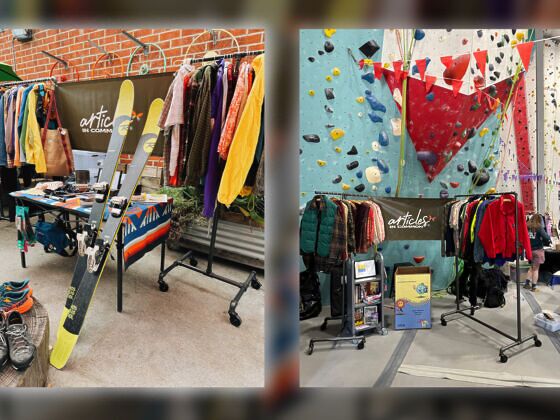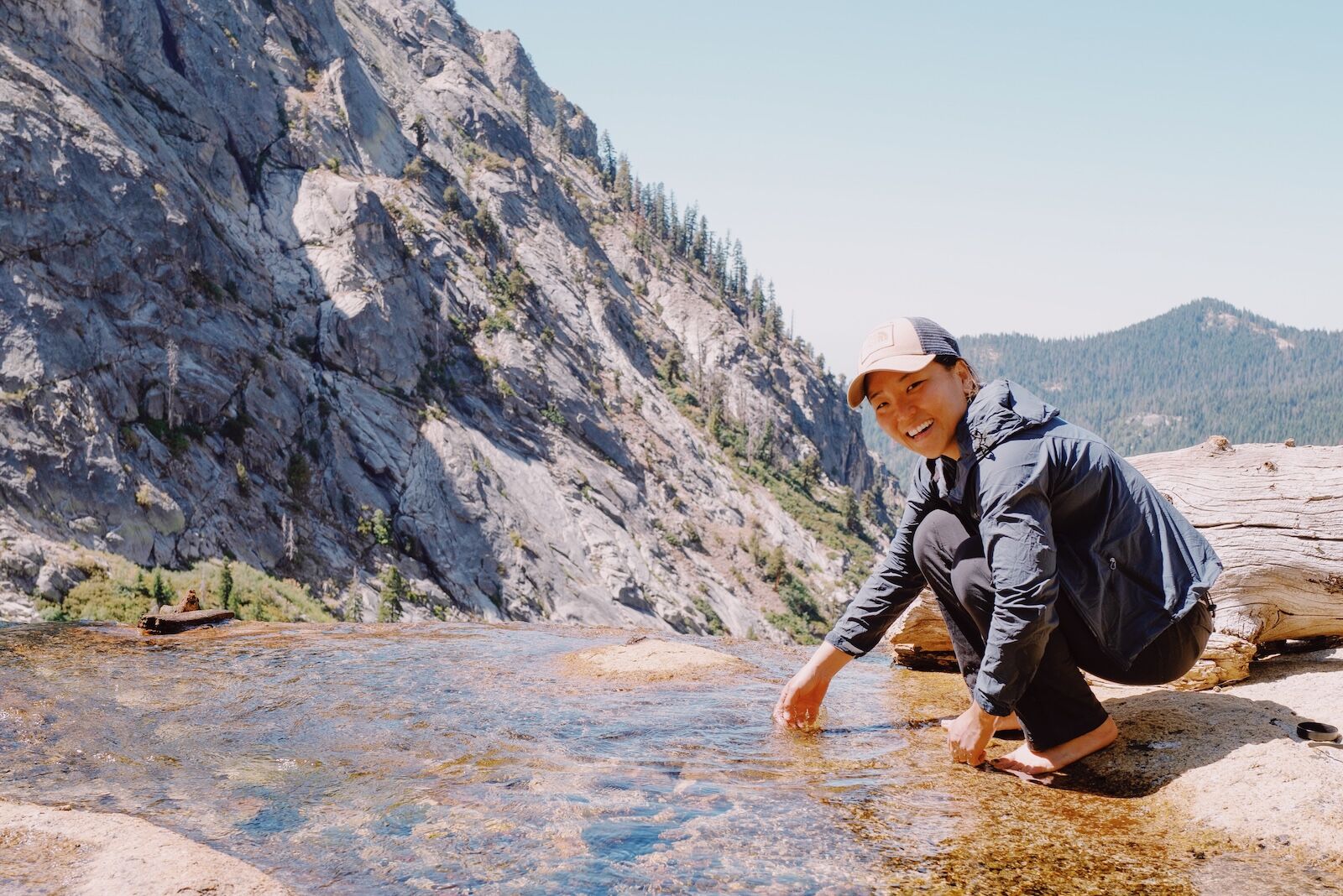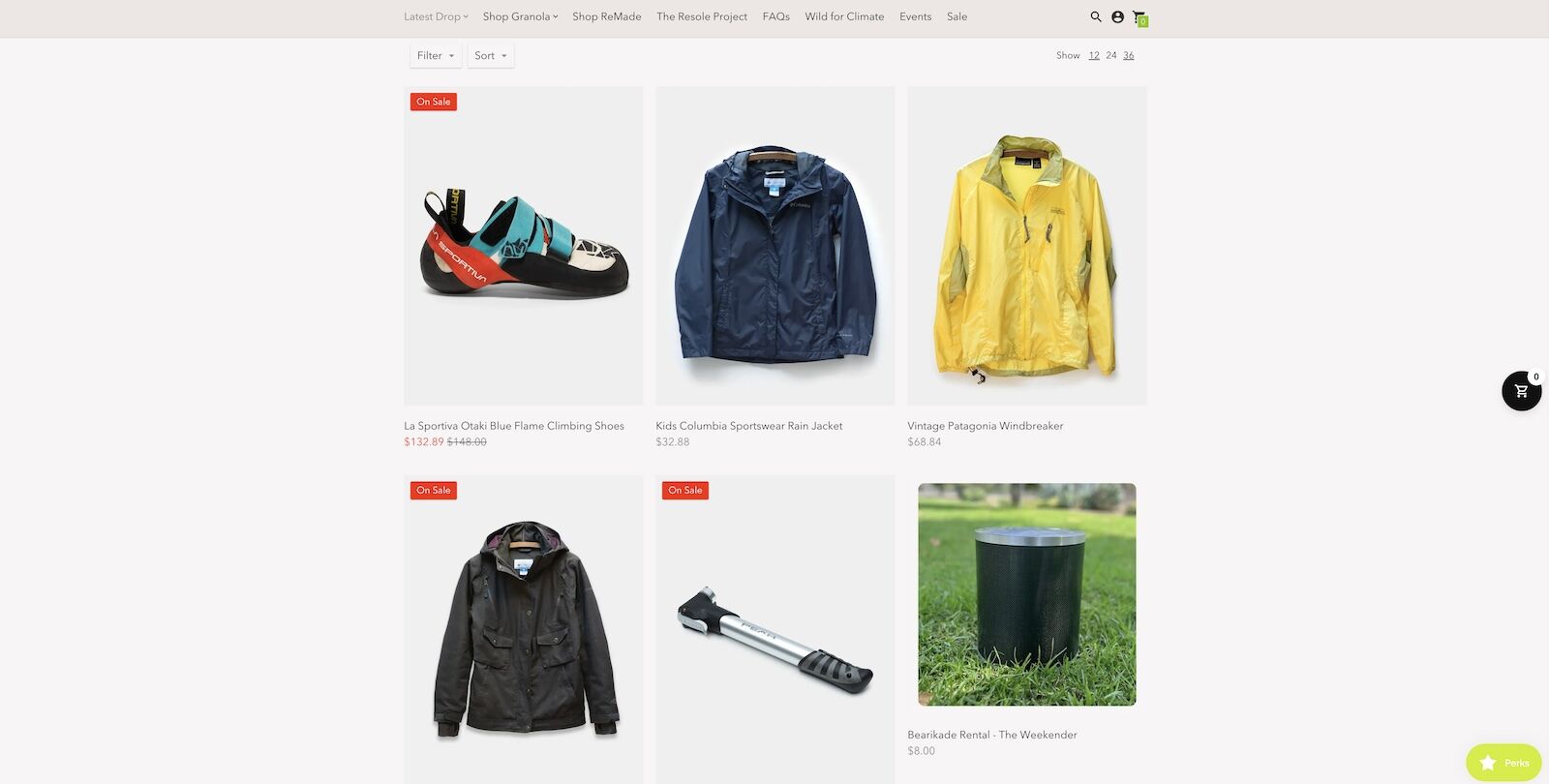Emme Hayes wasn’t happy with the “buy, use, and toss” flow of gear in the outdoor apparel industry. With constant pressure from brands and social media to buy the latest and greatest gear, the industry she loves and has worked in for much of her life wasn’t exactly living up to her – or its – values. Footwear and clothing account for some 8 percent of total carbon emissions, and though gear brands love to tout mantras of ever-increasing sustainability, buying new stuff constantly is never going to be as sustainable as using what you have for longer, and repurposing it when you’re done. In 2021, the climate activist and former apparel designer decided to do something about it, founding the digital platform Articles in Common as a marketplace for recreators to repurpose their outdoors gear and clothing to keep it out of landfills.


The Way You Buy Outdoor and Travel Gear Is Changing for the Better
“I was an avid backpacker spending a lot of time in the Sierras, I’ve done a bit of guiding, and I was also in the apparel industry,” Hayes says. “It is an extremely wasteful industry, and I felt like the way that it was going, it doesn’t make sense from a consumer standpoint – it’s not circular in any way, and it’s not easy for people to [repurpose their gear].”

Emme Hayes on the High Sierra Trail. Photo courtesy Emme Hayes
The second-hand market is a $1 billion industry. Historically, however, selling used outdoor gear has been incredibly decentralized, making it difficult for consumers to repurpose their stuff. Many communities also lack a good place to buy used gear. Thrift stores don’t dependably have quality gear, and the companies that offer platforms to buy and sell used items tend to prioritize – sometimes with exclusivity – their own products at the expense of customer convenience.
Until Articles in Common, Hayes says, “There wasn’t a central location online that made it easy for people to buy and sell used gear. From a consumer perspective, I wasn’t seeing what I thought I should be seeing the the outdoor industry from outdoor brands. There is a big push for resale, but it’s not with the consumer in mind. Realistically, it just doesn’t make sense for each brand to have their own resale section, because what person only buys Patagonia, or The North Face, or whoever?”
Hayes’ goal became to create an independent marketplace and scale it to be industry-wide, giving recreators the ability to sell gear from any brand to anyone, anywhere. Three years in, the company may be on the cusp of its moment of impact – recent figures from the Outdoor Industry Association show that some 87 percent of recreators want to get outdoors in a more sustainable manner, if only they could do so conveniently.
What problem is Articles in Common addressing?

Screenshot taken from Articles in Common website
“We’ve been conditioned by outdoor brands that we need the latest and greatest gear to do whatever we want to do outside, and that mentality has to change in order for the outdoor industry to truly become a sustainable, climate-friendly industry,” Hayes says.
Despite this, few industries have been as vocal in support of sustainability and eco-friendly business practices as the outdoor industry. Patagonia stakes its entire mission statement on the cause, “We’re in business to save our home planet,” and even many smaller outdoor gear brands like Nemo and Cotopaxi are generating fanfare and press coverage as they make efforts towards circular business practices.
These efforts have hardly slowed consumer spending on new outdoor gear, which stood at $27.5 billion in 2023, down three percent from 2022. The slight decline in year-over-year revenue is largely attributed to recreators being stocked, rather than people buying used gear instead.
Via the Articles in Common website, users can sign up with their email address to be a member of the platform. Then, they have the ability to sell their used gear directly to Articles in Common, which will resell the gear on its website. This itself makes the process convenient, as sellers don’t have to commission their piece and then wait around for someone to buy it before getting paid.
The platform goes further by enabling users to repair used gear such as climbing shoes with a process as simple as dropping the shoes at their local climbing gym. For gear that’s past its useful life, the platform connects members to options for recycling or repurposing.
The process of selling your gear is painstakingly easy. Once Articles in Common approves the purchase of a piece of gear, it provides a shipping label for the user to send it to them at no cost.
Gear available on the platform is as varied as the recreators in the outdoors. At the time of writing, the website lists a pair of Rossignol skis next to a set of tent stakes and a kids down jacket from Patagonia. The “Latest Drop” section showcases gear just listed on the site. The company does its best to maintain stock of gear for dogs, and always has a vast selection of outdoor- and climate-centric books for sale. Products from women of color and other marginalized groups are featured prominently.
Articles in Common is a company built around impact

Climbing shoe waste. Photo courtesy Articles in Common
Hayes spearheaded an effort to acquire used climbing shoes from gyms across the country who otherwise would toss their rental fleets into the trash once the soles degraded past a certain point.
“The first donation that we got was over 500 pounds of climbing shoes,” Hayes says. “And that’s one gym in LA. If you multiply that by all climbing gyms that have exploded across the US, that’s a lot of shoes.”
The ReSole Project also encourages climbers to resole their climbing shoes at their local climbing gym, and to push the gyms across California to resole their shoes rather than disposing of them.
“We’re working to grow this across California and eventually across different climbing franchises,” Hayes says.
Articles in Common takes its activism into communities as well, particularly in its hometown of Los Angeles. Pop-ups at gyms and markets happen on occassion and can be tracked on the company’s Events page. It hosts workshops on topics like “ultralight backpacking” skills and hosts a blog full of actionable content to help readers better engage with sustainable practices in the outdoors.
“There’s a different way of approaching the outdoors,” Hayes says. “It doesn’t have to be about conquering the next summit or checking the next thing off your list. Look at what’s happened to Mt. Everest. Let’s make it about having as little impact as possible.”